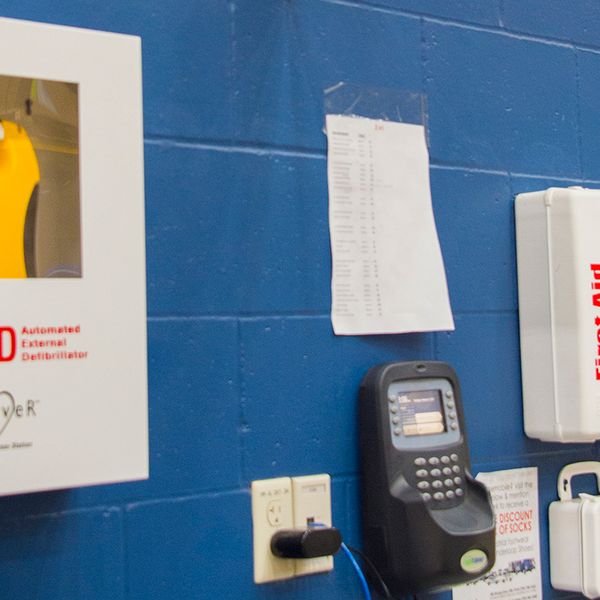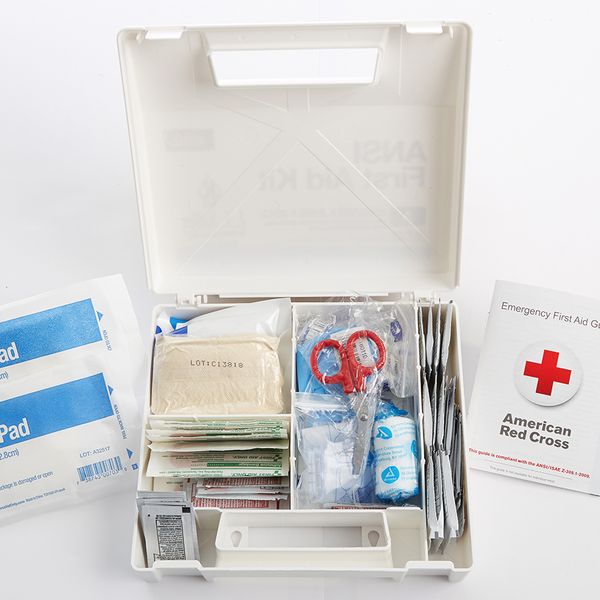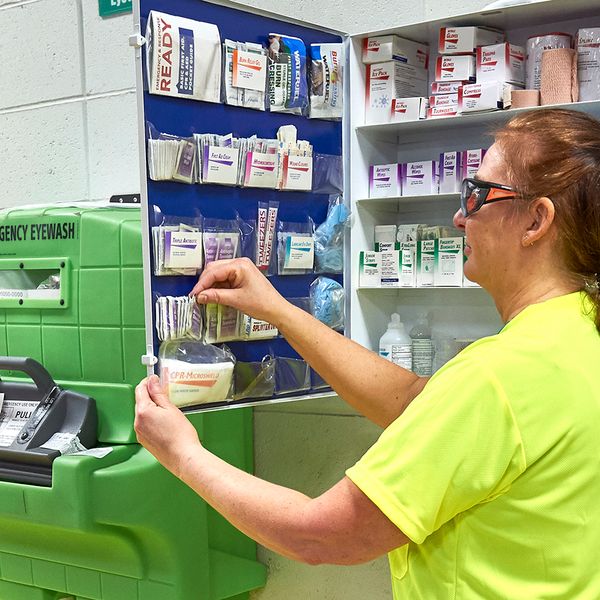Ensuring worker access to first aid supplies
The Occupational Safety and Health Administration (OSHA) requires employers to provide a safe workplace that is reasonably free of hazards. Still, accidents happen, so employers must also provide access to emergency medical care and appropriate first aid supplies.
OSHA’s standard on first aid applies to all employers, from offices to factories. The standard is just three short paragraphs that don’t offer much detail. The second paragraph in particular raises more questions than it answers, stating simply:
In the absence of an infirmary, clinic, or hospital in near proximity to the workplace which is used for the treatment of all injured employees, a person or persons shall be adequately trained to render first aid. Adequate first aid supplies shall be readily available.
This requires employers to ensure prompt first aid, either by having trained people on site, or by ensuring that emergency responders can arrive in a reasonable time. Based on other guidance from OSHA:
- Where serious accidents are likely, emergency care must be available within three to four minutes. Serious accidents may involve falls, suffocation, electrocution, or amputation.
- Where serious injuries are not likely, such as offices, a response time of up to 15 minutes may be reasonable.
This paragraph also requires that “adequate” first aid supplies be “readily available,” but doesn’t define those terms. As a best practice, workers should be able to reach first aid supplies within three to four minutes. They should not need to travel through several doorways, hallways, and/or stairways to access the supplies.
Number of kits
There is no specific requirement on the number of first-aid kits a workplace must have, nor where to place them. Employers must determine this based on anticipated needs, and based on the size of the workplace to ensure that supplies are readily available within a few minutes.
Mounting kits on a well can help make sure they don’t get misplaced, but this isn’t required.
Locking the supplies
Some employees might take supplies for personal use, prompting employers to wonder if they can lock the first aid cabinet. Although first aid supplies can be locked, they must still be readily accessible.
If the person with the key goes offsite or cannot be found when needed, this would violate the “readily accessible” requirement. One option might be to provide keys to several individuals and let employees know who has a key.
OTC medications
Over-the-counter (OTC) medications include things like aspirin that can be purchased without a prescription. OSHA does not address OTC medications, but guidance from the American National Standards Institute says that if a first-aid kit includes OTC drugs, they should be in a single dose, tamper evident packaging, and should not contain ingredients known to cause drowsiness.
Some employers don’t offer OTC medications due to concerns about liability if a worker has an allergic reaction to employer-supplied medication. Others provide a vending machine to purchase medications. State laws can affect the level of liability, so employers may want to consult a legal professional on this issue.
As a supervisor, make sure that you know your company’s policy on OTC medications. It may happen that an employee will ask if you have an aspirin or other medication. Even if you keep a bottle at your desk, giving pills to a worker might not be a good idea. If the employee has a reaction, both you and your company could potentially be held liable.

















































